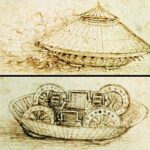Modern tanks are a crucial component of military strength and technological advancements. When deciding which modern tank is the best today, various factors such as firepower, protection, and mobility should be considered.
The Abrams M1A2 SepV3 has advanced features like improved communication systems and active protection capabilities.
Tanks such as the German KF51 Panther and the Russian T-14 Armata also rank among the top contenders in today’s military landscape.
Each of these machines showcases impressive engineering and battlefield readiness. These tanks represent the pinnacle of modern military technology, making it worthwhile to explore the features that set them apart.
If you are interested in military technology, this article will explain why these tanks lead the field. The article will clearly understand which modern tanks dominate today’s battlefields by examining their strengths.
Evolution and Role of Modern Tanks
Modern tanks have transformed significantly over the years, serving crucial roles on the battlefield. They reflect advancements in technology and military strategy, impacting how conflicts are managed and won.
Historical Development
The evolution of modern tanks began with the Mark I tank, which debuted during World War I. Early tanks emphasized armored protection and mechanized movement across rough terrains.
As technology advanced, WWII saw tanks becoming faster and more powerful.
Today’s modern-day tanks have enhanced firepower and sophisticated targeting systems. They incorporate lightweight materials, increasing mobility without sacrificing defense.
Prominent tanks such as the M1 Abrams from the United States and the Leopard 2 from Germany showcase these innovations.
Tanks have evolved from slow-moving war machines to rapid-response units capable of striking with precision.
Contemporary Use
Today, modern battle tanks play a pivotal role in military operations. They are crucial for ground assaults, providing robust firepower and protection for troops.
For example, modern US tanks, like the M1 Abrams, are known for their combat effectiveness and versatility in diverse environments.
Modern tanks are not just about power; they integrate advanced technologies such as GPS navigation and automated control systems. Nations like Russia and China continuously develop sophisticated models to maintain strategic advantages.
As warfare evolves, the role of modern tanks adapts, proving their integral presence in both offensive and defensive strategies on the battlefield.
Design and Technology
Modern tanks are a marvel of engineering. They combine advanced materials and cutting-edge technology to dominate the battlefield.
These machines focus on superior protection, adequate firepower, agility, and crew comfort to ensure peak operational efficiency.
Armor Systems
Modern military tanks utilize composite armor that enhances protection while minimizing weight. This armor often consists of layered materials like ceramics, steel, and Kevlar, designed to absorb and deflect projectiles.
Reactive armor adds a layer of safety by exploding outward to neutralize incoming threats. Advances in modern us tanks demonstrate exceptional armor systems, such as the M1 Abrams, which uses depleted uranium for enhanced defense levels.
Weaponry
Cutting-edge weaponry in modern tanks underscores their strategic value. These tanks typically feature a main gun, often a smoothbore cannon, capable of firing armor-piercing rounds and guided missiles.
These firepower capabilities are complemented by machine guns for infantry defense. The Leopard 2A7, a prime example of modern German tanks, showcases a highly effective Rheinmetall 120mm gun optimized for various operations.
Mobility and Power
Modern-day tanks require potent engines to ensure quick maneuverability and strategic advantage. Turbine and diesel engines are standard, offering a blend of speed and reliability.
With advanced suspension systems, these tanks maintain stability over rough terrain. Russian modern tanks like the T-14 Armata are known for their mobility and speed, showcasing improvements in engines and transmission systems for optimal performance.
Crew Comfort and Support Systems
Modern tanks integrate ergonomic designs and technology for improved crew comfort. Climate control, padded seats, and advanced communication systems enhance the operational environment.
Systems like night vision, GPS, and automated tracking allow crews to remain effective during missions. The advancements in Japanese modern tanks, such as the Type 10, highlight innovations in crew-centric systems, ensuring efficiency and comfort during extended operations.
Notable Modern Tanks
Modern tanks have become a crucial element in military strategy across various nations. Each country boasts unique designs with advanced technology, enhancing their capabilities on the battlefield.
Main Battle Tanks by Country
German modern tanks are led by the Leopard 2, renowned for its powerful 120mm smoothbore cannon and excellent mobility. The United States fields the M1A2 Abrams, famous for its durable armor and advanced electronics.
Russian modern tanks, like the T-14 Armata, feature innovative technology such as an unmanned turret and active protection systems.
French modern tanks include the Leclerc, which is valued for its speed and digital fire control systems. Japan’s Type 10 offers versatile performance tailored for its varied terrain.
The Leopard vs. Abrams
The Leopard 2 and the M1 Abrams are often compared due to their prominence in western armies.
The Leopard 2 emphasizes mobility and range with efficient fuel consumption. Its advanced thermal sights allow precision targeting.
The M1 Abrams focuses on strong defense, equipped with composite armor and powerful turbine engines. It excels in firepower and protection but is heavier and consumes more fuel.
Both tanks use sophisticated targeting systems, making them formidable players in modern warfare.
Table 1. Comparison between Leopard 2 and Abrams tanks
| Features | Leopard 2 (Germany) | Abrams (USA) |
|---|---|---|
| Nickname | Swift Predator | Ironclad Juggernaut |
| Manufacturer | Germany | United States |
| Main Gun | 120mm smoothbore gun | 120mm smoothbore gun |
| Special Focus | Speed, Agility, and High-Tech Firepower | Superior Armor and Survivability |
| Mobility | Superior – thanks to a powerful multi-fuel engine and advanced suspension system | High – but not specifically highlighted in comparison to Leopard 2 |
| Advanced Tech | Digital fire control systems, advanced optics, and sophisticated thermal imaging system | Advanced fire control system, sensors, and targeting system |
| Armor | Not specified | Advanced composite armor (Chobham armor) |
| Survivability | Not specifically highlighted | High – designed to withstand high-explosive anti-tank (HEAT) rounds and kinetic energy penetrators |
| Ability to Engage Targets | High accuracy in various combat conditions | Accurate in both day and night conditions, can track and engage moving targets while on the move |
| Terrain Versatility | Can traverse challenging terrain at high speeds | Not specified |
Innovative Designs
Modern tank designs push boundaries with technology like artificial intelligence and stealth capability.
For instance, the Merkava Mk 4 Barak incorporates advanced AI systems that streamline operational tasks.
The PL-01 from Poland showcases a futuristic design with modular armor and an infrared suppression system. Such innovations aim to enhance survivability and adaptability in diverse combat environments.
The Most Dangerous Tanks in the World
Formidable tanks with a reputation for dominance include the T-14 Armata, which is known for its cutting-edge tech and protection systems.
The M1A2 Abrams holds a prominent place due to its impressive combat record.
The Leopard 2’s versatility and robust defensive features make it a fearsome opponent. Tanks like these define military might and technological progression in modern warfare.
Advancements in Tank Technology
Modern tanks continue to evolve with new technologies that enhance their capabilities on the battlefield. Two significant areas of advancement include active protection systems and the integration of unmanned ground vehicles.
Active Protection Systems
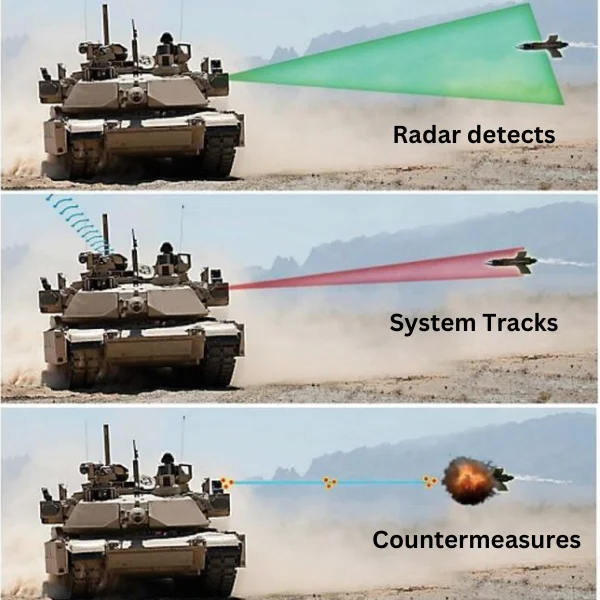
How to deal with an incoming threat by the Trophy APS system
Active protection systems (APS) safeguard modern tanks against incoming threats. These systems detect, track, and neutralize projectiles such as anti-tank missiles and rockets before they can cause harm.
For example, the Israeli Trophy system uses radar and sensors to identify threats and counterattacks by launching small projectiles to intercept them.
US modern tanks like the M1 Abrams are adopting such technologies, significantly increasing their survivability. Russian modern tanks, notably the T-14 Armata, also feature advanced APS capabilities.
This technology is a game-changer, providing extra defense layers and adapting to various war environments.
Unmanned Ground Vehicles Integration
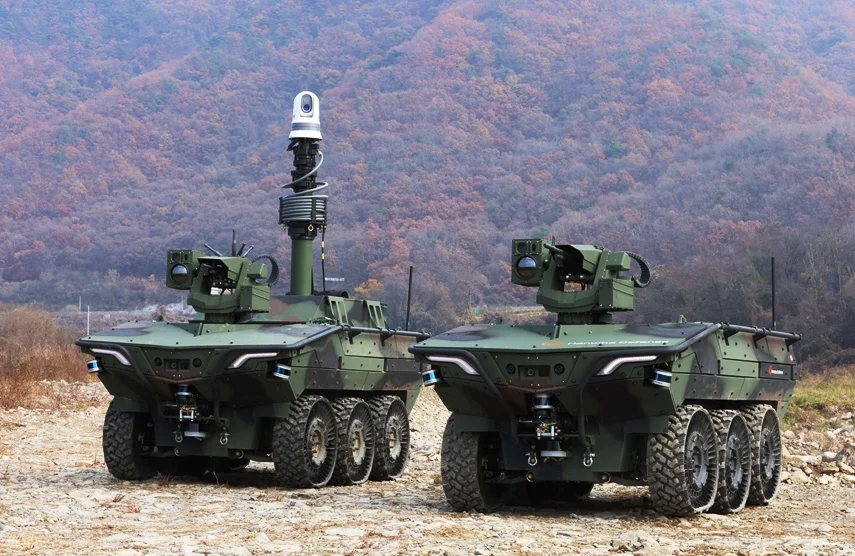
Arion-SMET UGV for supporting infantry operations such as transporting munition and weapons by US Army
Integrating unmanned ground vehicles (UGVs) with modern main battle tanks transforms operational scenarios. UGVs can perform various tasks, including reconnaissance, logistics support, and active conflict engagement.
By working alongside modern military tanks, UGVs help reduce the risk to human soldiers, allowing remote operations in dangerous zones.
Modern US tanks, for instance, are increasingly tested for compatibility with UGVs, expanding their tactical options on the battlefield. The military potential of UGVs is vast, ranging from resupply missions to combat support, and represents a future step in automating and enhancing tank warfare capabilities.
Comparative Analysis
Modern tanks vary significantly in design and capability, depending on country-specific needs and technological advancements. Key issues include tank-to-tank interactions and how defense budgets shape these innovations.
Tank Versus Tank Comparisons
A few models often come to mind when comparing tanks: the M1A2 Abrams, Leopard 2, and the T-14 Armata.
The M1A2 Abrams is a modern US tank known for its armor and advanced fire control systems. German modern tanks like the Leopard 2 are recognized for their precision engineering and versatility on the battlefield.
Russian modern tanks like the T-14 Armata feature advanced technology like unmanned turrets and heavy armor.
Modern Japanese tanks, like the Type 10, offer agility and cutting-edge electronics, making them suitable for maneuver warfare. Each tank model has its strengths: firepower, armor, or mobility. The choice often depends on the operational needs and strategy of the military using them.
Global Defense Spending
Global defense spending plays a significant role in the design and deployment of these tanks.
Countries with large budgets, such as the United States, Germany, and Russia, can afford experimental technologies for their modern military tanks.
For instance, the development of the T-14 Armata reflects Russia’s investment in military innovation.
Germany’s Leopard 2 is another example of a tank benefiting from a robust defense budget.
In contrast, countries with lower budgets may focus on upgrading existing models rather than developing new ones. While some nations field the most modern tanks, others rely on older but improved versions.
Final Thoughts
Modern tanks play a crucial role in military strategy today. Known for their advanced technology and robust design, these machines combine firepower, armor, and mobility to become powerful assets on the battlefield.
Several tanks are noted for their excellence. For example, the Leopard 2 is highly regarded in Europe for its ability to combat high-tech opponents and balance speed and protection.
The M1A2C Abrams from the U.S. boasts better armor, improved mobility, and superior fire control systems. Its main gun can penetrate most armor types, making it a formidable adversary.
Different regions have their favorites. The Merkava V is preferred in Israel for its adaptability to local challenges. Meanwhile, Russian field models like the T-14 Armata and T-90M emphasize cutting-edge features and versatility.
Key Takeaways: Modern tanks, like the K2 Black Panther from Korea, integrate technology and performance to address diverse military needs. Rapid advancements suggest continued evolution in tank design and capability.
Frequently Asked Questions
Modern tanks vary widely in design and capabilities. This section explores various aspects of current military tanks, including comparisons and advancements.
What is the most modern tank?
The most modern tanks include the T-14 Armata and the M1A2 SEP V3 Abrams. These tanks feature advanced technology, such as upgraded armor and improved targeting systems. They represent the forefront of tank innovation today.
What is the best modern tank today?
Opinions on the best modern tank vary, but the M1A2C Abrams is often highlighted for its mobility and armor. Another contender is the Challenger 2, which is known for its combat experience. These tanks are widely recognized in military circles for their effectiveness.
Is T-90 better than Abrams?
The T-90 is less expensive and lighter, offering specific advantages in different terrains. However, the Abrams are noted for their superior armor and firepower. Each tank has unique strengths, making them suitable for other roles.
Are there any 4th gen tanks?
Fourth-generation tanks include the T-14 Armata. This tank features cutting-edge technologies like unmanned turrets, and it is a step up from previous generations with advanced automation and protection.
What is the top 1 tank in the world?
Currently, the M1A2 Abrams is often regarded as the top tank globally. Its robust design and combat performance set high standards and remain a prominent choice for many armed forces.
Has the US ever lost an Abrams tank?
The US has lost Abrams tanks in combat, though such losses are relatively rare. Situations in conflict zones have led to damage or destruction. These losses often result from anti-tank missiles or IEDs.
Why is the Abrams tank so good?
The Abrams tank is praised for its strong armor and firepower. Its advanced electronics and mobility make it versatile in various terrains. The tank’s reliability and continuous upgrades contribute to its excellence.
How many Abrams has Ukraine lost?
Ukraine has not operated Abrams tanks extensively, so verifiable loss data is limited. However, current military engagements and aid might alter their usage and potential losses in the future.
What country has the best tank?
Countries like the United States and Russia maintain some of the best tanks, such as the M1A2 Abrams and T-14 Armata. These tanks showcase superior military technology. The diverse strengths of these models make them highly regarded internationally.
Is America making a new tank?
Yes, America is working on developing new tank models. These projects aim to integrate future-ready technologies.
Continued research and development ensure that American tanks remain competitive globally.
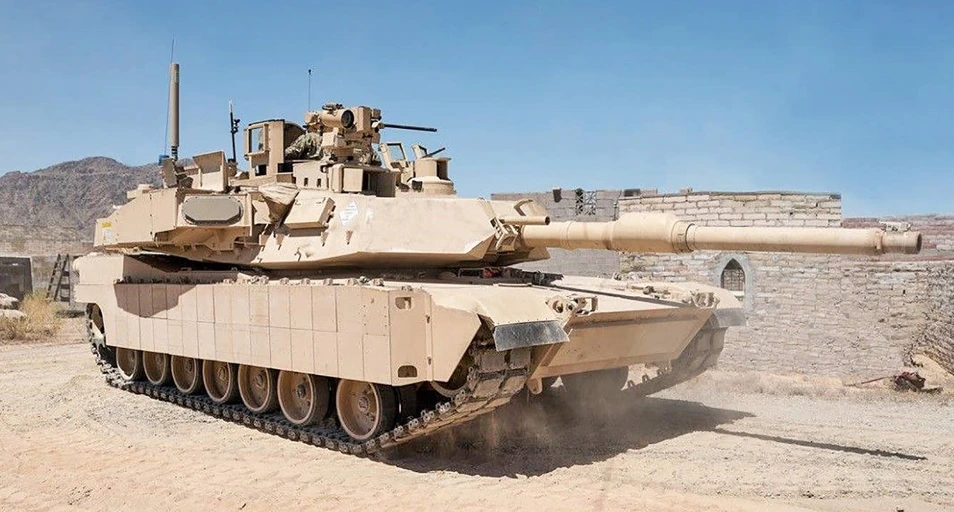

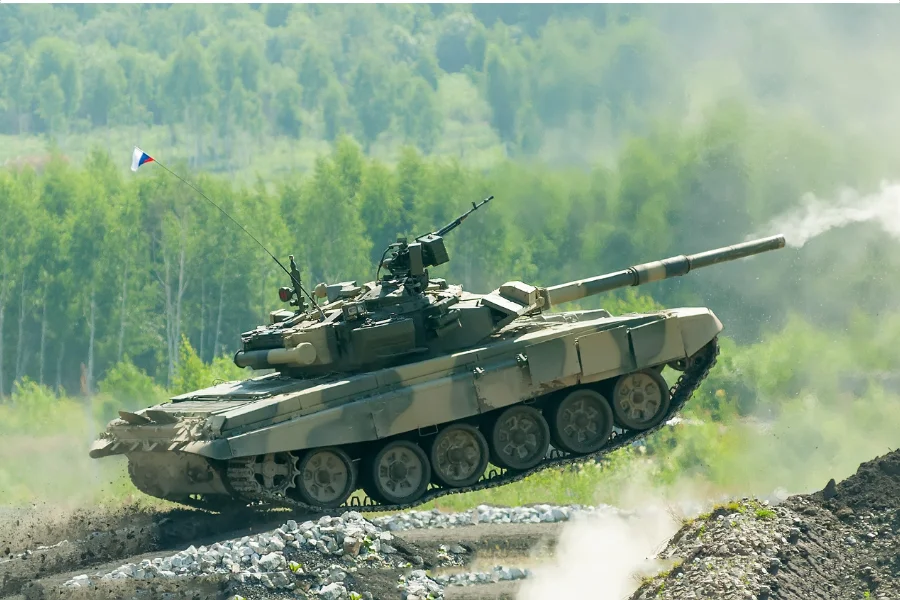
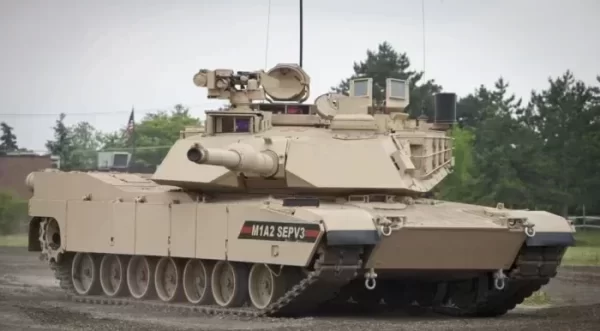
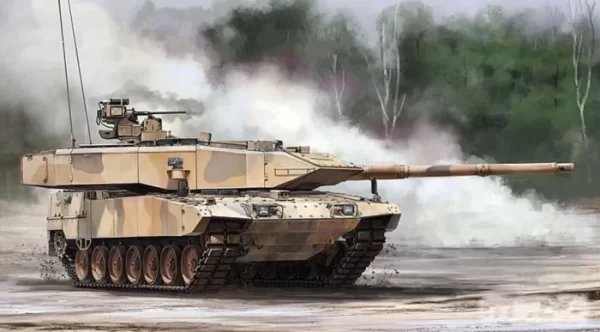
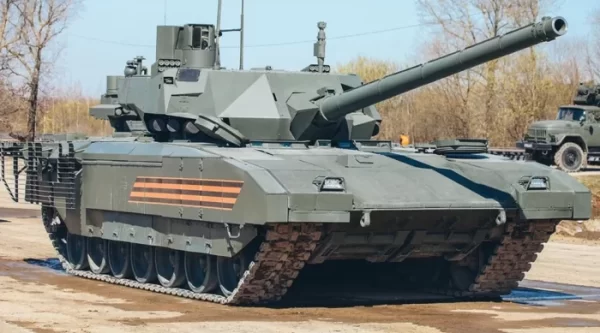
 I’m Leonardo Bianchi, the mind behind Leonardo da Vinci's Inventions. Thanks for visiting.
I’m Leonardo Bianchi, the mind behind Leonardo da Vinci's Inventions. Thanks for visiting. 
